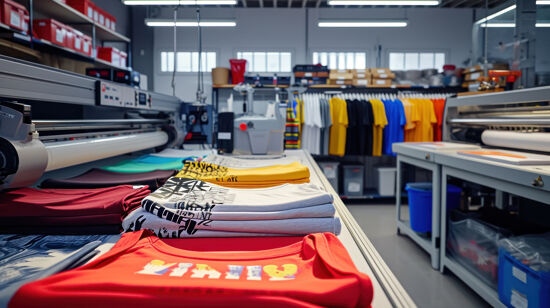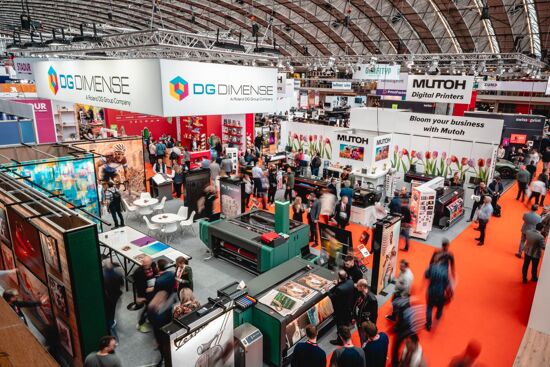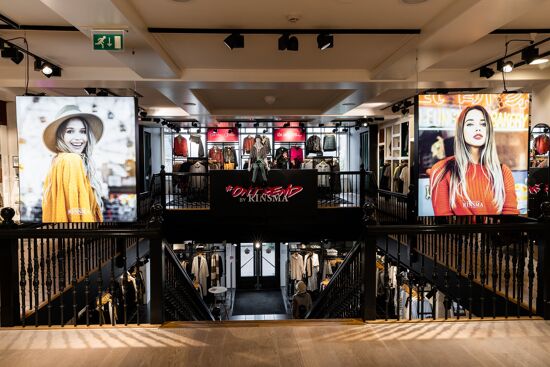How is On-Demand Customisation transforming Apparel?

On-demand customisation is reshaping apparel, moving from mass production to personalised, sustainable fashion. Digital printing, AI, and 3D sampling enable tailored designs, reducing waste. Challenges include skills gaps and scaling. Personalisation Experience's 2025 SmartHub explores these advancements, fostering a future of democratised design.
What if the fashion industry wasn’t dictated by mass production and limited choices, but by personalisation, efficiency, and sustainability? Enter the era of on-demand customisation, powered by advanced digital technologies, redefining how apparel is designed, produced, and delivered. For the fashion professionals keeping an eye on industry trends, this isn’t just an idea for the future; it’s happening now and reshaping the sector more dynamically than ever before.
The Changing Landscape of Fashion Design and Manufacturing
For decades, the apparel industry has relied on rigid supply chains and high-volume manufacturing to meet consumer demand. While this model delivered affordable fast-fashion, it came at a cost—overproduction, significant textile waste, and a lack of personalisation in what customers wear.
On-demand customisation offers a radically different approach. By leveraging digital design and printing technologies, brands can now create apparel tailored to individual tastes, produced only when needed. This not only cuts down on waste but also allows creative freedom and unique experiences for the consumer. Fashion is no longer just about mass appeal; it’s about designing for the individual.
The Technologies Making It Possible:
Digital transformation is at the heart of on-demand fashion. Several critical technologies are driving this revolution along the value chain, from concept to final product.
Digital Printing: Digital printing methods, such as Direct-to-Garment (DTG), Digital Roll-to-Roll and Transfer Sublimation printing, have reduced setup times, eliminated the need for extensive physical screens, and enabled full-colour, high-definition designs. This gives designers an almost limitless canvas to create intricate patterns while minimising water usage and harmful chemicals in the process.
AI and Automation: Artificial Intelligence (AI) is empowering apparel brands to streamline their processes. Algorithms can predict consumer preferences, helping brands curate bespoke designs. AI also ensures operational efficiency—from automated pattern cutting to optimised production timelines.
3D Sampling and Virtual Fitting: Digital prototyping with 3D sampling software allows brands to visualise designs in real-time, saving time and material waste. Virtual fitting tools further reduce the notoriously wasteful sampling process by providing accurate simulations of garment fit and drape.
Advanced Supply Chain Solutions: Digital supply chain platforms provide visibility and transparency, allowing brands to coordinate localised production closer to the demand centres. This decentralised approach reduces shipping emissions and ensures quicker turnarounds.
Industry Challenges and Key Insights
While the promise of democratised design is appealing, implementing on-demand customisation is not without its hurdles. Fashion professionals and manufacturers face several pressing challenges:
Bridging the Digital Skills Gap: Transitioning to digital tools necessitates a workforce equipped with the knowledge to operate them. Many design teams lack training in digital printing, AI tools, or 3D sampling technologies, which slows adoption. Upskilling talent through targeted training programmes and collaborations with educational institutions is essential.
Managing Sustainability at Scale: Sustainability isn’t just about using eco-friendly fabrics; it’s also about minimising waste across the value chain. Without clear strategies around overproduction, logistics, and waste management, brands risk greenwashing rather than achieving actual environmental impact.
Leveraging Consumer Demand for Personalisation: Consumers increasingly value personalised fashion options, yet brands often struggle to integrate personalisation without disrupting existing workflows and production costs. Early adopters employing modular design systems are already seeing measurable success.
Cost and Infrastructure Constraints: Adopting digital design and printing technologies often requires significant upfront investment, which can deter smaller players. Shared resources, co-working manufacturer hubs, and scalable platforms will help reduce this barrier to entry.
The Opportunities Are Boundless:
Despite its challenges, on-demand customisation represents a massive opportunity for growth and innovation. Here's why the future of apparel design and manufacturing looks brighter than ever before:
Sustainability as a Competitor’s Advantage: Ethical production is fast becoming a non-negotiable in fashion. By prioritising on-demand manufacturing and reducing surplus waste, brands can not only meet global sustainability goals but also enhance their reputation and create loyal customer bases.
Unlocking New Revenue Streams: A personalised design model opens doors to higher-margin products, such as limited-edition pieces and customer-curated collections. Brands have already shown that consumers are willing to pay a premium for individuality.
Enhanced Consumer Experiences: With ultra-customised designs, brands can foster deeper emotional connections with customers. Offering co-creation tools, virtual design studios, or direct input into print patterns creates a powerful sense of ownership for shoppers.
Growth of Digital-Only Apparel: The rise of virtual fashion in the metaverse has introduced digital-only apparel, further enhancing customisation opportunities while minimising the environmental impact of physical product creation.
Driving Change Across the Value Chain: True democratisation of design requires the entire apparel value chain to evolve. Digital design tools, on-demand production facilities, and efficient supply chains must work seamlessly to create the personalised, sustainable future consumers are asking for.
For high-street retailers and e-commerce brands, digitising design processes is no longer optional; it’s imperative. By adopting technologies like digital textile printing and shorter production cycles, businesses can react to trends in real-time, without the burden of excessive inventory.
At the same time, textile innovators and manufacturers must integrate sustainable practices, such as circular fashion programmes or waterless printing technologies, to stay competitive in an eco-conscious marketplace.
Join the Conversation
The shift toward democratised design calls for bold thinkers, innovative solutions, and a community of changemakers.
That’s why we’re thrilled to invite you to SmartHub at the FESPA Global Expo 2025 in Berlin.
Join us at the Smart theatre to listen and learn from the many experts and industry specialists contributing to our talk programme. Connect with industry-leading digital specialists, technology providers, textile pioneers, and on-demand manufacturers who are paving the path forward. Explore cutting-edge technologies, uncover emerging trends, and step into the future of printed apparel.
Discover the latest innovations in personalisation at Personalisation Experience 2025, a premier gathering dedicated to unveiling the latest in digital print personalisation, offering an immersive platform for industry professionals to explore innovative technologies, sustainable practices, and forward-thinking strategies. Taking place from 6 -9 May at Messe Berlin, Germany. Register to visit here and use promo code PEXJ502 before 8 April and only pay € 50 for your entrance ticket.
Topics
Interested in joining our community?
Enquire today about joining your local FESPA Association or FESPA Direct
Recent news

Driving Product Personalisation in Garment Decoration with Digital Printing Technologies
Digital printing revolutionises garment personalisation, meeting rising consumer demand for unique apparel. Brands like Swag.com and Printful leverage AI and automation for efficient, on-demand customisation. Challenges include scaling and sustainability. FESPA 2025 showcases technologies driving this personalised e-commerce future.

FESPA 2025 Feature Programme confirmed: both new and returning
FESPA Global Print Expo 2025 is set to introduce its newest editions to its feature programme, SmartHub and the ESE Pavilion, as well as welcome the return of existing features: the 2025 FESPA Awards; the high-adrenaline World Wrap Masters competition; and the Club FESPA Lounge.
.png?width=550)
My Personalisation Experience
Richard Askam, a pioneer in Personalisation, transitioned from the drinks industry to creating iconic campaigns like Coca-Cola's "Share a Coke." His speaking career, includes leading a TEDx talk, becoming an ambassador for FESPA . In the past, he has led the conference sessions for the Personalisation Experience" conference, and will return this year to speak in a panel discussion.

What Does LED Lighting Do for Your Textile Frame?
LED lighting transforms textile frames, enhancing visibility and colour vibrancy for impactful displays. At European Sign Expo 2025, EFKA will showcase innovative illuminated and non-illuminated frames, including 3D and modular designs. LED's energy efficiency and storytelling potential make them crucial for modern visual communication.